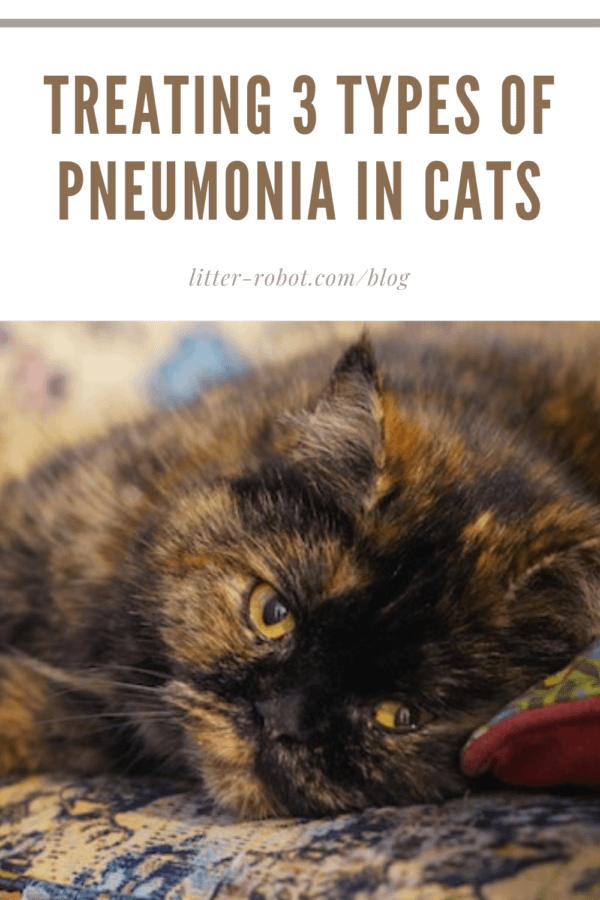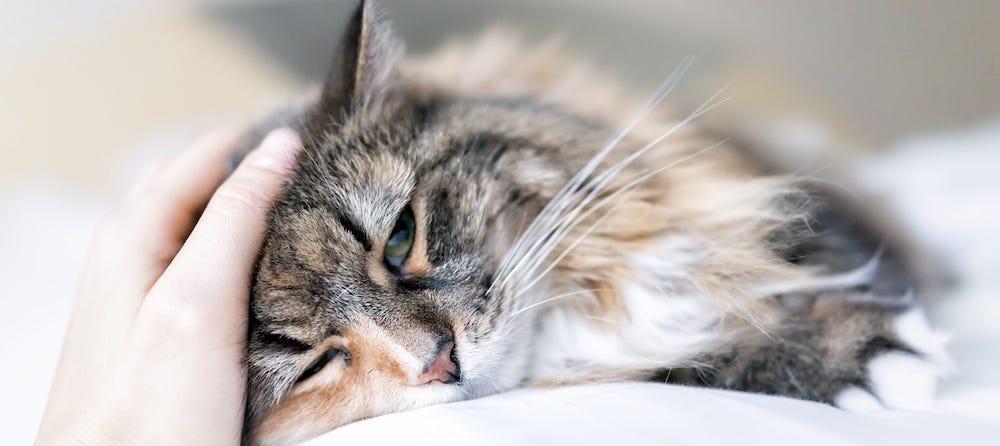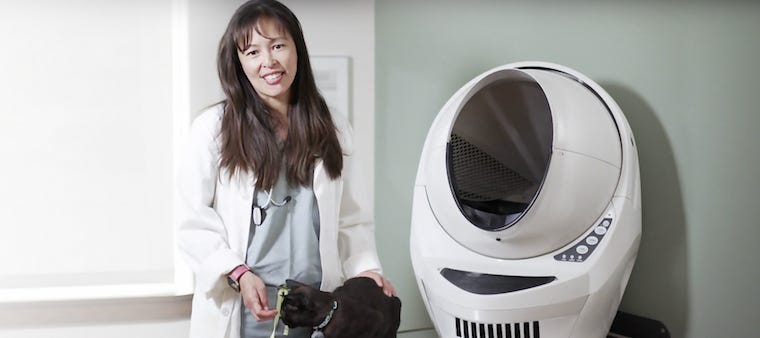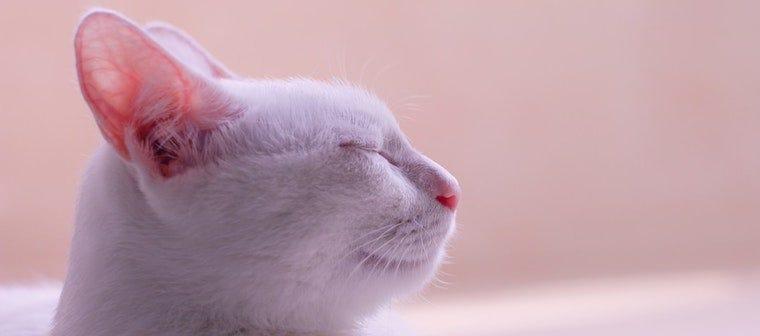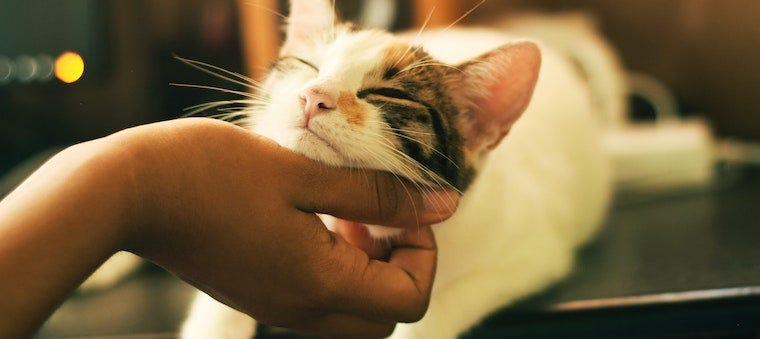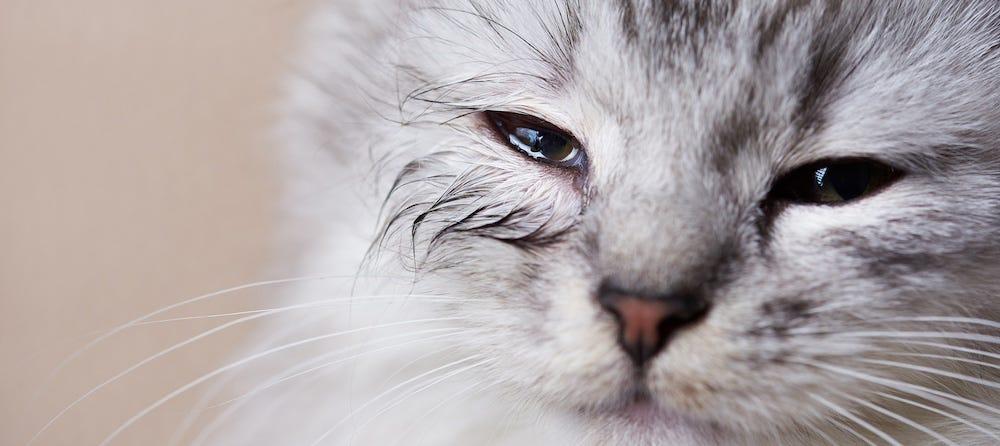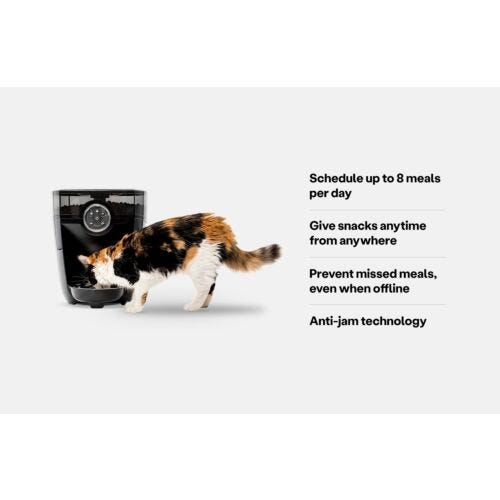Pneumonia, the inflammation of the lungs, is relatively uncommon in cats. Regardless, it’s important to be aware of the symptoms of feline pneumonia, as it can be life-threatening if left untreated. Find out how to identify and treat three types of pneumonia in cats.
How do cats get pneumonia?
The most common cause of pneumonia in cats is viral infections, often in the lower respiratory tract. Pneumonia can occur in cats with untreated upper respiratory infections (URIs). URIs are far more common in cats than pneumonia. URIs are the equivalent of a “common cold” in humans, although the underlying causes are different. URIs are a common cause of sneezing, fever, runny eyes, and conjunctivitis in cats.
Unfortunately, feline upper respiratory infections are extremely infectious and contagious—and if left untreated, they can lead to pneumonia in cats.
Signs of pneumonia in cats
Like humans, pneumonia in cats is more likely to occur (and more difficult to treat) in the very young, the very old, and cats with compromised immune systems. Although symptoms can vary slightly depending on the type of pneumonia, you should generally be on the lookout for signs that include:
- Difficulty breathing or swallowing
- Coughing
- Increased respiratory rate
- Rapid heartbeat
- Green or yellow nasal discharge
- Fever
- Dehydration
- Loss of appetite
- Weight loss
- Lethargy
Is cat pneumonia contagious?
Upper respiratory infections are highly contagious from cat to cat. Certain types of pneumonia, including bacterial and fungal pneumonia, are sometimes contagious among cats. These types of pneumonia are not contagious to humans, and rarely contagious to dogs.
Treating 3 types of pneumonia in cats
There are three major types of pneumonia in cats: aspiration pneumonia, bacterial pneumonia, and fungal pneumonia. There are some parasites and cancers that can get into and damage the tissues of the lungs, leading to pneumonia as well. Note: If you see any of the above symptoms in your cat, be sure to contact your vet. Pneumonia should not be treated at home without the supervision of a veterinarian.
Aspiration pneumonia in cats
Aspiration pneumonia occurs when a cat has inhaled (aspirated) substances into the lungs, including vomit, food, or foreign matter such as a tiny piece of plastic. For instance, “a cat may vomit and, in the process, inhale some of its stomach contents, which tend to be very acidic and will also irritate the tissues,” explains Dr. Daniel Fletcher of Cornell University’s College of Veterinary Medicine.
Other surprising triggers of aspiration pneumonia in cats include general anesthesia, faulty administration of liquid medication, inhalation of smoke or other harsh chemicals, seizure disorders, and chronic vomiting.
Treating aspiration pneumonia
Aspiration pneumonia in cats usually requires extensive workup and treatment that may include the following:
- Full blood work, cultures, and titers
- Chest X-rays, possibly repeated to monitor progress and resolution
- Aggressive antibiotic or antifungal therapy
- Bronchodilator medications to making breathing easier
- Bronchoalveolar lavage (BAL) or tracheal wash
- Arterial blood gas analysis to measure the lung’s ability to oxygenate
- Oxygen therapy
- Fluid therapy via an IV catheter
Cats with this type of pneumonia will need to rest in a stress-free environment under careful supervision, potentially for several weeks to months depending on severity of infection and response to treatment.
Even with treatment, cats with aspiration pneumonia may have a poor prognosis. That’s why it’s imperative to get your cat to the vet if you notice any of the symptoms above.
Bacterial pneumonia in cats
Bacterial pneumonia in cats can occur after exposure to bacterial agents inhaled from the environment or from other cats. Aspiration pneumonia can have a bacterial cause, as mentioned above, but bacteria doesn’t necessarily have to be inhaled. It can also arise from an existing bacterial infection elsewhere in the body. Organisms that have been reported as causes of bacterial pneumonia in cats include Pasteurella spp, Escherichia coli, Staphylococcus spp, Streptococcus spp, Pseudomonas spp, Bordetella bronchiseptica, and Mycoplasma spp.
Treating bacterial pneumonia
With proper treatment, the prognosis for bacterial pneumonia in cats is generally good. Diagnostics and treatment may include the following:
- Tracheal wash to gather material for analysis
- Chest X-rays
- Complete blood count
- Urinalysis
- Antibiotics, once the specific bacteria has been identified
Depending on the cat’s condition, oxygen therapy and fluid therapy may need to be administered as well.
Fungal pneumonia in cats
Fungal pneumonia in cats results from an infection after exposure to fungi inhaled from the environment. Some types of fungi or mold that can cause lung infections include Blastomyces, Histoplasma, and Aspergillus. According to Dr. Karen Shaw Becker, “exposure can happen through contact with soil that’s rich in organic matter, bird droppings, or feces.”
Treating fungal pneumonia
A fungal infection in cats may first present as an eye infection or skin problem. The precise treatment depends on the type of fungus that has caused the infection. Initial diagnostics and treatments may include:
- Tracheal wash
- Full blood work
- Urinalysis
- Chest X-rays
- Fungal cultures and titers
- Abdominal ultrasound
Unfortunately, many cats require long-term therapy with fungal infections, and sometimes full resolution of their initial symptoms is either not obtained or takes a long time to achieve.
How to prevent pneumonia in cats
The good news is, pneumonia in cats is relatively rare. Here are tips to help your cat stay healthy:
- Keep your cat up to date on vaccines
- Keep your cat indoors if possible
- Limit your cat’s exposure to smoke, chemicals, and other problematic inhalations
If you suspect your cat has even an upper respiratory infection or you notice your cat exhibiting any of the symptoms above, get to a veterinarian right away to prevent the illness from worsening.
Sources:
Cover photo by Zosia Korcz on Unsplash
